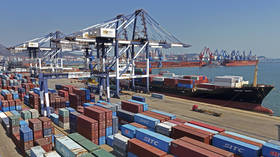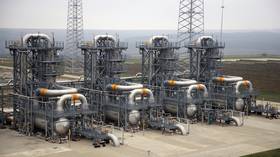Cosmic concrete ideal for Mars can make Red Planet settlement a reality

Builders may soon be looking to Mars for work after engineers developed a new form of concrete that can be produced on the Red Planet. The discovery helps to solve the problem of building structures able to withstand radiation on the planet.
Developed by NASA with engineers from Stanford University, the concrete doesn’t require boiling limestone to produce a binding agent, a process which needs tremendous heat and energy, resulting in carbon emissions.
Instead a protein from bovine blood known to become gluey when mixed with soil was used, according to Stanford.
.@StanfordEng researchers have developed a technique for turning Mars or moon rocks into concrete, on site. https://t.co/e7fNzd8whkpic.twitter.com/s1MHGlS9mZ
— Stanford University (@Stanford) May 3, 2017
Michael Lepech, an associate professor of civil and environmental engineering at Stanford, mixed the protein with simulated extraterrestrial soils in a mixer using vacuum technology to replicate the low gravity on Mars.
Lepech said the results were as solid as the concrete used in sidewalks and patios. It was also successfully tested at a gun range where it was blasted with high-speed gas particles in order to simulate micrometeorites.
“Right now, we’re using a little bit more energy per cubic meter of concrete,” Lepech says. “But that’s in part because we’re doing this on a small scale. We’re at the start of a very long road.”
If SpaceX boss Elon Musk gets his way humans will be on Mars by 2024 (NASA, less optimistically, propose 2030) when a substance like the concrete will be essential in setting up structures on the planet capable of protecting settlers from space radiation.
Stanford said the goal is to create biological “factories” of organisms to produce the binder. The organisms would feed on human organic waste produced by settlements on Mars.
Earth could also benefit from the new method of producing concrete. Current methods produce 5 percent of all human-generated carbon emissions, the number of which would be significantly reduced by eliminating the need to boil limestone.
#NASA’s new #Mars drone to scout for human habitation sites https://t.co/K7wEqpQ5VJpic.twitter.com/20Dpw4C0eg
— RT (@RT_com) April 2, 2017













